I realize that it’s been some time since I posted here. I have been deep in the subterranean autoharp mines stoking the steam driven sawdust grinders, board stretchers, and string breakers that produce the custom instruments that I create for my many wonderful customers… I only just emerged for a hot shower, a cold adult beverage and to catch up on some news of the world. Building custom stringed instruments and strumming newly minted autoharps takes me to a comforting place apart from much of the disturbing social, political, and environmental reports. Like our music, it is a soothing embrocation to be applied to the psychological pains and strains of daily life.
So, what have I been doing? Besides completing some autoharp orders, I am currently involved in long term projects creating two non-traditional zithers, one for a musician who preforms classical Indian ragas and another for a Nashville based multi-instrumentalist.
 Along the way I have made a couple of improvements on my “Child ‘Harps”. I had been making slotted chord bar holders by cutting down the manufactured plastic holders once produced by Oscar Schmidt. These work well but are a bit noisy when the wooden bars “clack” against the hard plastic. My newer Child ‘Harps now have the quieter Delrin and steel pin combs as on my standard sized autoharps.
Along the way I have made a couple of improvements on my “Child ‘Harps”. I had been making slotted chord bar holders by cutting down the manufactured plastic holders once produced by Oscar Schmidt. These work well but are a bit noisy when the wooden bars “clack” against the hard plastic. My newer Child ‘Harps now have the quieter Delrin and steel pin combs as on my standard sized autoharps.
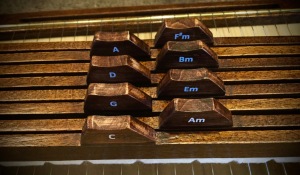 Child ‘Harps have carried seven chords in two rows. I now offer eight chords. Here is the G/D diatonic version.
Child ‘Harps have carried seven chords in two rows. I now offer eight chords. Here is the G/D diatonic version.
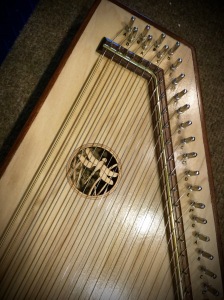 As with the Child ‘Harps’ larger siblings, laser cut sound hole rosettes are popular. there is a variety of styles available in this smaller size for this smaller autoharp.
As with the Child ‘Harps’ larger siblings, laser cut sound hole rosettes are popular. there is a variety of styles available in this smaller size for this smaller autoharp.
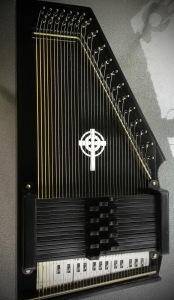 A more recent build is this thirty-six string, fifteen chord chromatic I built for a gentleman just beginning his autoharp journey. His preferences included a Celtic cross sound hole rosette, an all black finish, and a salvaged OS tuning label at the anchor end.
A more recent build is this thirty-six string, fifteen chord chromatic I built for a gentleman just beginning his autoharp journey. His preferences included a Celtic cross sound hole rosette, an all black finish, and a salvaged OS tuning label at the anchor end.

He plans to play his new autoharp horizontally, on his lap, and strumming below the chord bars. For that, I moved the chord set closer to the angled bridge to allow more space below.
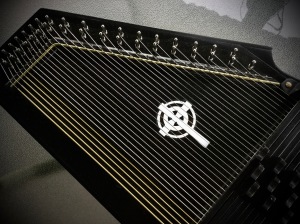 This instrument resembles the old black model A autoharps of the past but features all of my modern improvements for tone, volume, stability, and play ability.
This instrument resembles the old black model A autoharps of the past but features all of my modern improvements for tone, volume, stability, and play ability.
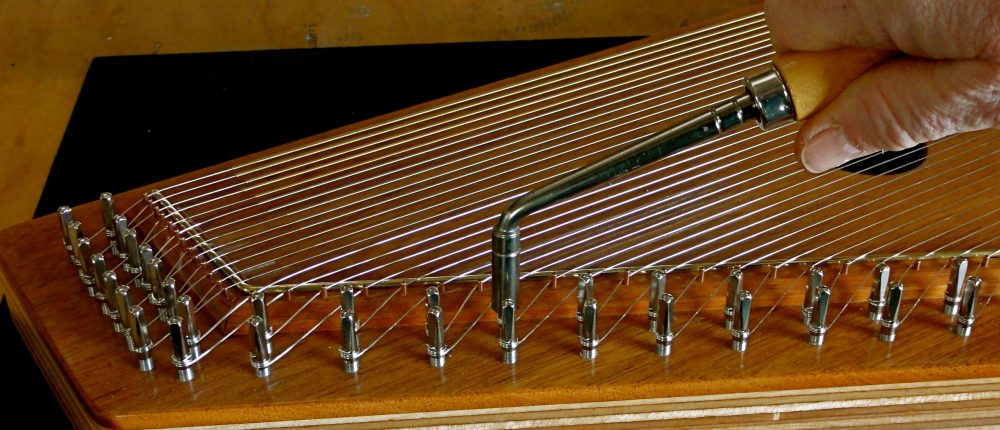
You must be logged in to post a comment.